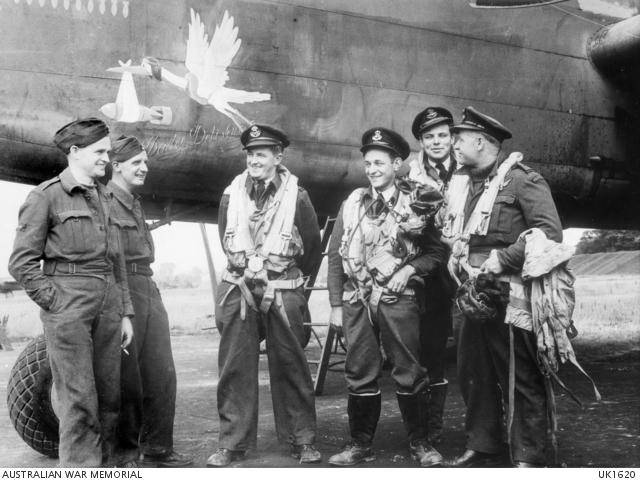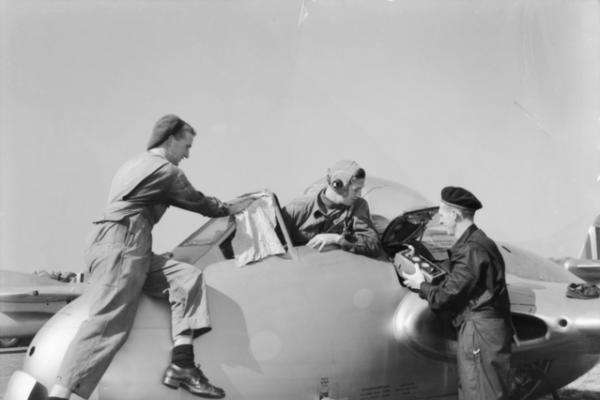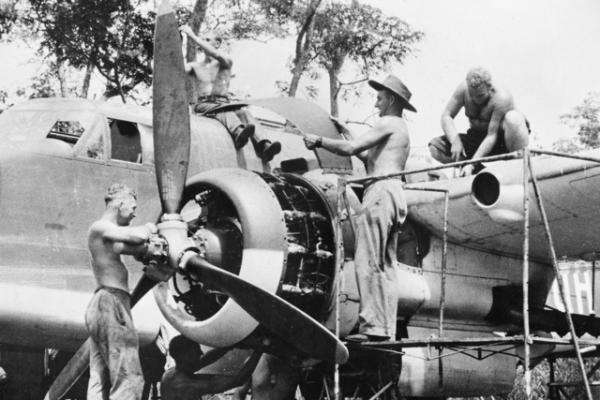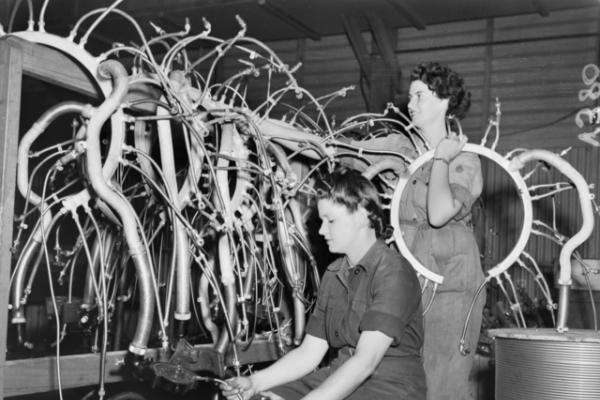The Royal Australian Air Force
The Royal Australian Air Force
History
Military aviation was first pioneered during the First World War. During that war, both the armies and the navies of all the major combatants operated aircraft. Late in the war, however, when it was realised that aerial fighting was a distinct form of warfare and not just an adjunct to land or sea operations, some nations formed specialist air forces. Combining the Royal Naval Air Service and the Royal Flying Corps, Great Britain formed the Royal Air Force in 1918. The four squadrons of the Australian Flying Corps (AFC) remained part of the AIF. In 1920, the remnants of the AFC became the Australian Air Corps, which in turn became the Royal Australian Air Force on 31 March 1921.
Bristol aircraft of the Australian Flying Corps flying over Palestine, c. 1918. C41861
The Royal Australian Air Force
Organisation
The RAAF, like the RAN, is not officially grouped along functional lines like the Army. RAAF personnel, however, can be classified into two broad categories: air crew and ground staff and within these categories are found a variety of occupations, known in the air force as "musterings".
Informal group portrait of RAF ground staff with RAAF and Royal New Zealand Air Force air crew of a Mitchell bomber squadron, 180 Squadron RAF with the Second Tactical Air Force. Left to right: two RAF ground crew, Jock (Fitter) and Alf (Rigger); 422248 Flying Officer (FO) Jack B O'Halloran, pilot of Sydney, NSW, (later Flight Lieutenant and DFC); 417379 Pilot Officer James Crosby (Jim) Jennison (later Flying Officer and DFC) of Adelaide, SA; 422175 FO Reg J Hansen of Sydney, NSW; FO Harry M Hawthorn, RNZAF of Hastings, NZ. The aircraft was lettered D and the pilot named it 'Daily Delivery' and the nose art illustration portrays a stork carrying a large bomb. C263114
Air Crew
Aircrew are the personnel who are responsible for the operation of an aircraft and its weapons. They are:
- Pilots who actually fly the aircraft
- Navigators who plan the aircraft's flight path and then guide the pilot
- Bombardiers/Weapons System Operators who aim and then drop or fire the aircraft's main weapons
- Air Gunners who operate the weapons used for the aircraft's self-defence
- Observers who observe and report activity outside the aircraft, usually on the ground or sea
- Radio Operators/Communications Operators who operate the aircraft's communications equipment
- Loadmasters who ensure the safe and efficient stowage of cargo and passengers aboard the aircraft
- Engineers who monitor the aircraft's engines and other mechanical systems
- Tactical Systems Operators who operate an aircraft's electronic equipment, such as radar, sonar buoys, passive defensive systems etc.
Ground Staff
Ground staff are the personnel who support the operation of aircraft and the crew members who fly in them. There are actually more ground staff in the air force than air crew and this group includes a diverse range of trades and professions including:
- Air traffic controllers
- Airfield defence guards
- Armourers
- Chaplains
- Clerks
- Communications staff
- Dentists
- Doctors
- Drivers
- Fire fighters
- Intelligence staff
- Mechanics
- Nurses
- Parachute packers
- Supply staff




